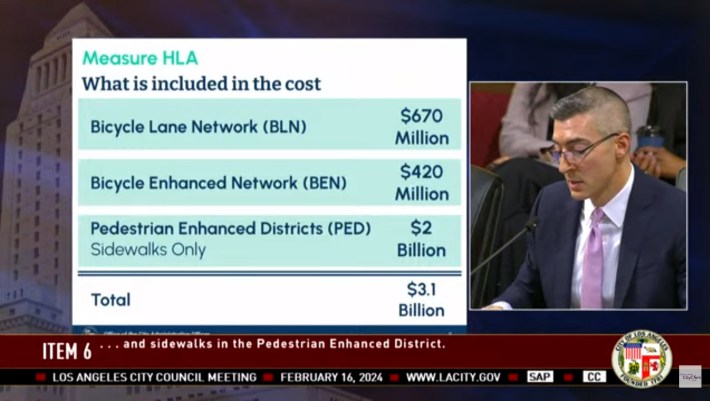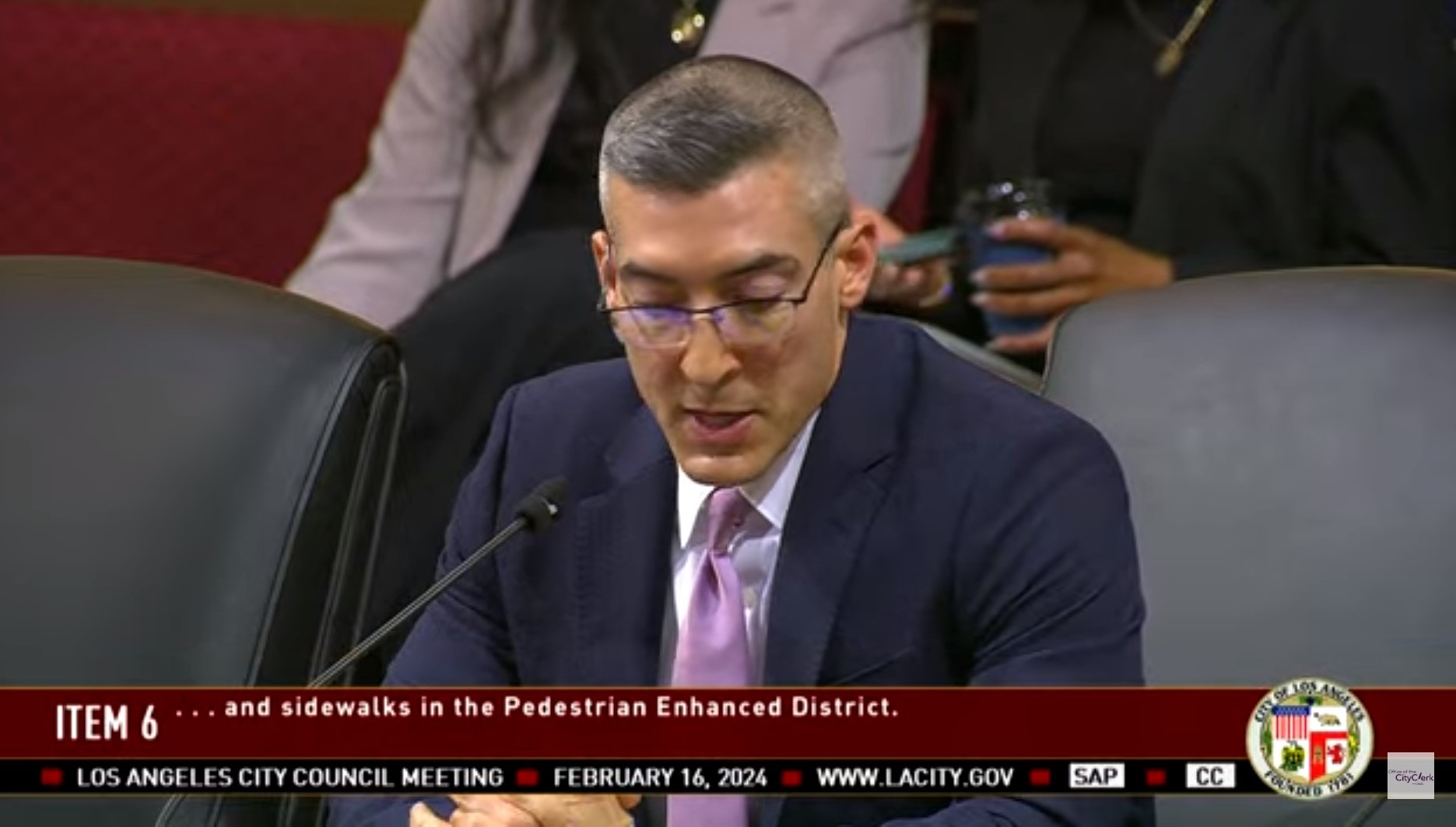There was a long safe streets discussion at today's meeting of the L.A. City Council. I am not going to rehash the whole thing, but instead will make a couple of editorial points.
It's all about Measure HLA. In case you're unfamiliar with Measure HLA - the Healthy Streets L.A. initiative: it's a ballot measure that would require the city to gradually implement its own approved Mobility Plan.
At the meeting, on an informational agenda item regarding how the Mobility Plan could impact the city budget, the City Administrative Officer (CAO a sort of city staff Chief Financial Officer) Matt Szabo presented an astonishingly misleading new cost estimate for Measure HLA. The council discussion following the CAO presentation was informative regarding how inaccurate the CAO presentation was, and where the councilmembers stand on the city taking streets safety improvements seriously.
Watch the video of the full meeting (streets discussion starts at 2:58:45) and/or check out SBLA's Twitter thread for a blow-by-blow summary.
1. CAO's Ballooning City Cost Estimates Are Inflated and Misleading
When CAO Szabo says that if HLA passes, the city would pay $2.5 to $3.1 billion dollars repairing and upgrading city sidewalks and adding bike and bus lanes over the next decade, my first thought is, "Can I get that promise in writing?"
Long time bike advocates like me can barely dream of that kind of money going to green transportation.
Spoiler: it won't. Don't get your hopes up.
The CAO estimates are basically scaremongering bullshit. CAO HLA cost estimates keep moving around, and have included various existing programs - street repaving and sidewalk repair - which the city has funded and will continue to fund whether voters approve HLA or not.

Several City Councilmembers poked various holes in today's version of HLA costs. Councilmember Nithya Raman noted that the bike lane implementation costs in her district were smaller than the CAO forecast.
In November, the CAO had forecast bike lanes to cost L.A. $350,000 per mile.
That was roughly double current city costs. L.A. Department of Transportation's higher quality facilities (for example parking-protected facilities like San Vicente Boulevard) cost just under $200,000 per mile.

Today, the CAO upped its bike lane figure to $1.76 million per mile. I had to look at that number several times - not a typo: $1.76 million per mile of bike lane. Really.
The CAO bike lane cost today is about nine times what LADOT currently spends for a mile of its best bike lanes. And the CAO applies this cost to the Mobility Plan's protected and unprotected bike lanes.
It's ridiculous.
Some on the council, most strongly Councilmember Bob Blumenfield noted that shoehorning full HLA Mobility Plan implementation into an artificial ten-year horizon makes per-year costs look higher. Nobody expects HLA will result in the city implementing its entire plan in a decade.
What I expect is that, until election day, cost estimates will continue to soar. Then after HLA passes, the city will resume doing bare-bones bike facilities.
2. Measure HLA Critics Continue to Pit Allies Against Each Other
What makes me sad is how city fearmongering pits safe streets allies against each other.
In 2022, the City Council drove a wedge between equity-focused mobility groups and groups more focused on green transportation.

In today's presentation, CAO Szabo spoke about how passing HLA could harm city Vision Zero efforts, and folks with disabilities, and first/last mile improvements at Metro stations. (All these programs are so anemic today that it's difficult for me to imagine them getting worse.)
Councilmember Traci Park pitted Mobility Plan implementation against drivers, asking if HLA will delay repaving, making deteriorating streets "more dangerous."
Council President Paul Krekorian spoke at length on how HLA would delay implementation of Metro rail projects - mainly the East San Fernando Valley line.
No, Mr. Krekorian, transit riders really need bus lanes, bikeways, and sidewalks - that's how we get to transit.
No, Ms. Park, implementing the city's plan will make streets safer for everyone - including those of us who drive.
No, Mr. Szabo, implementing safe streets improvements is exactly what pedestrians, transit riders, and bicyclists need.
No, Council, the city getting serious about implementing bus lanes, bike lanes, sidewalk repair, and safer streets will improve equity. Communities of color are disproportionately killed and injured by the city's current car-centric biases.
Reader - I urge you to vote yes on HLA. Get involved. Donate. Volunteer.







